The Catbird Seat: Nashville chef talks experience of being one of top restaurants in US
Brian Baxter had a headache.
It was June 2020, the beginning of the second week of his tenure at The Catbird Seat, the renowned 22-seat hyper-seasonal Nashville restaurant that's served as a chef incubator for some of the city's top culinary talent.
Baxter was the fifth chef at the helm, and it was an objectively weird time to get started. The COVID-19 pandemic and protests for racial justice filled headlines. It was an uncertain time, news reports were constantly keen to point out.
Those shaky days infuse the journal entries that also make up some of the first few pages of Baxter's new book, "In The Catbird Seat," which chronicles his time at one of Nashville's most celebrated restaurants in 180 images and 470 recipes.
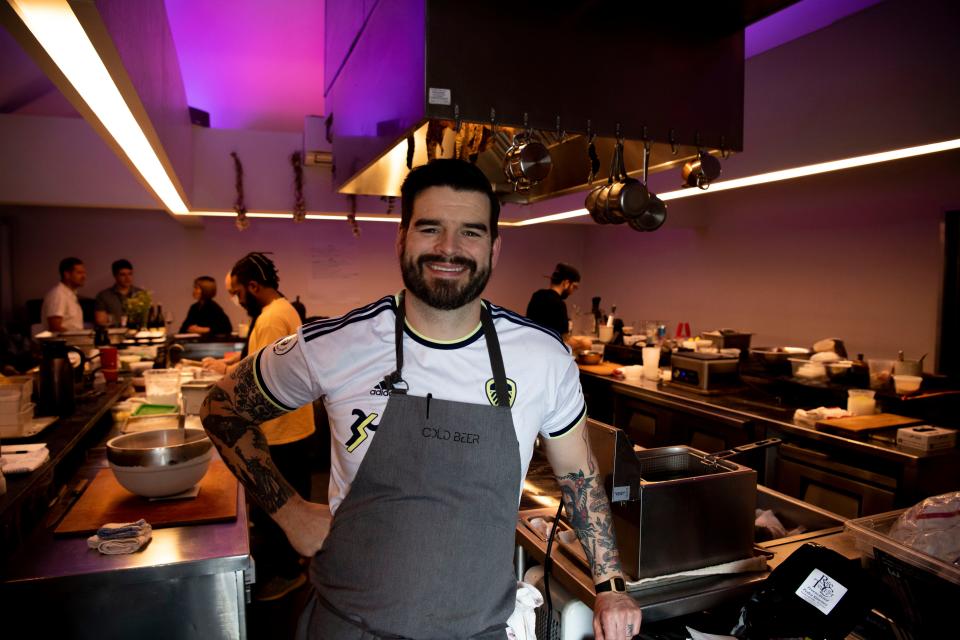
It's a journey through the chef's growth in a restaurant that thrust him into the spotlight. Soon he will exit stage left.
This year, The Catbird Seat will relocate to the recently revitalized Bill Voorhees building in Paseo South Gulch. That will mark the end of Baxter's four-year tenure, as he helps new chefs Andy Doubrava and Tiffani Ortiz step into his shoes.
He cannot yet say what's next for him but, in the meantime, The Catbird Seat remains open at 1711 Division Street where, in June 2020, Baxter worried how people would respond to his new position.
"I don’t usually get anxious, but this is a big opportunity," he wrote in 2020. "My brain feels clouded, and I have a pounding headache. This is The Catbird Seat. All the chefs who have worked here in the past have incredible résumés and cook incredible food."
Baxter, whose resume is equally incredible, wondered whether he would rise to the challenge. He ultimately decided the best he could do was try.
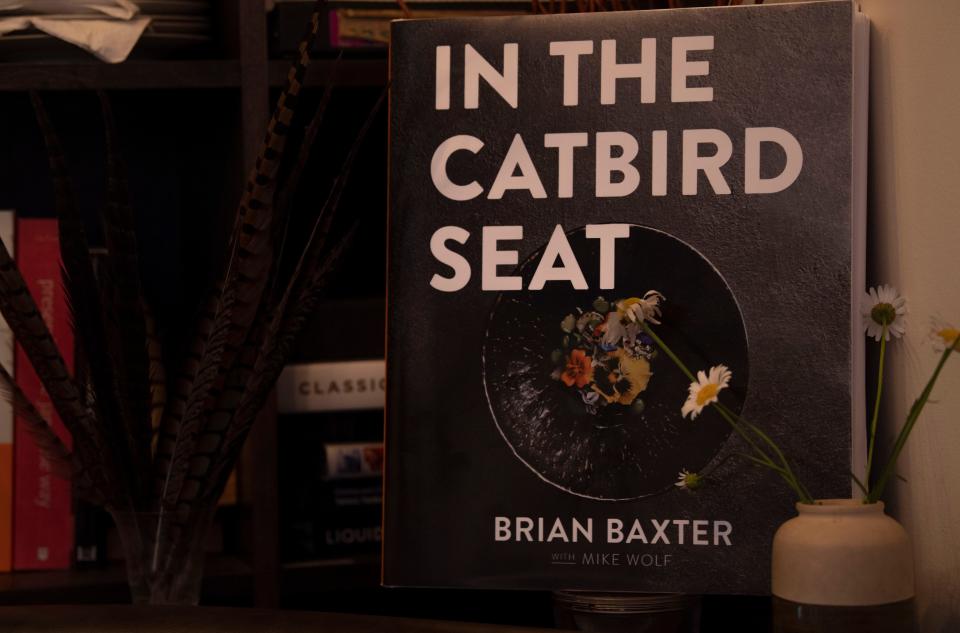
"A restaurant’s name or its past doesn’t define you," he wrote. "It’s what you make of it that will define you. Cook to the best of your abilities, let the products speak for themselves, make delicious food, and make the guests feel welcomed and comfortable. Try to be the best that you can every single day, and the rest will come.”
The book, "In the Catbird Seat," chronicles Baxter's personal and professional growth, and even his growth as an artist; his watercolors fill the second half of the book, taking over for his art mentor Todd Saul who created the art for the first half.
The chef recently sat down with The Tennessean for the following interview, which has been minimally edited for length and clarity.
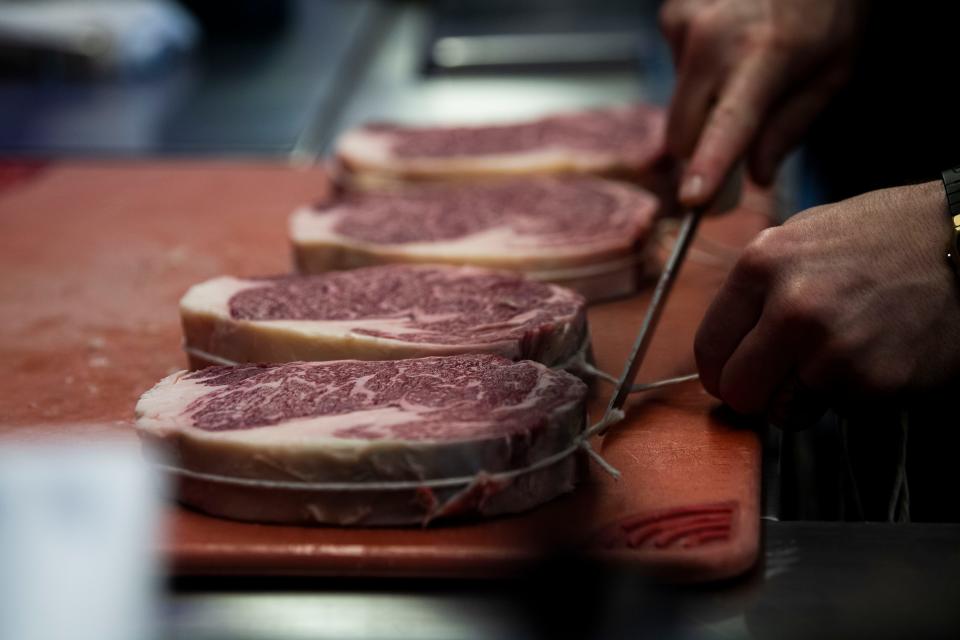
The Tennessean: It's hard for me to wrap my brain around writing 470 recipes while leading The Catbird Seat. Tell me about your process there.
Baxter: Because I write the recipes for the restaurant, it wasn't hard to go through and clean them up a little bit. We didn't take the time to shrink it down to serve four people. But something that's one bite might have five things that go into it.
Knowing that it's little bites throughout the meal, I have to try to surprise you. Even a simple vinaigrette might have more than just olive oil and lemon juice in it to layer the flavors. So we use a lot of fermented things from the season before or the year before in the same dish to try to build (flavor).
I think the cookbook was a good way to show how much work goes into what sometimes seems like such little bites. It's a cool way for them to look back and say, I had no idea it took 10 different oils to make this one sauce or whatever it might be.
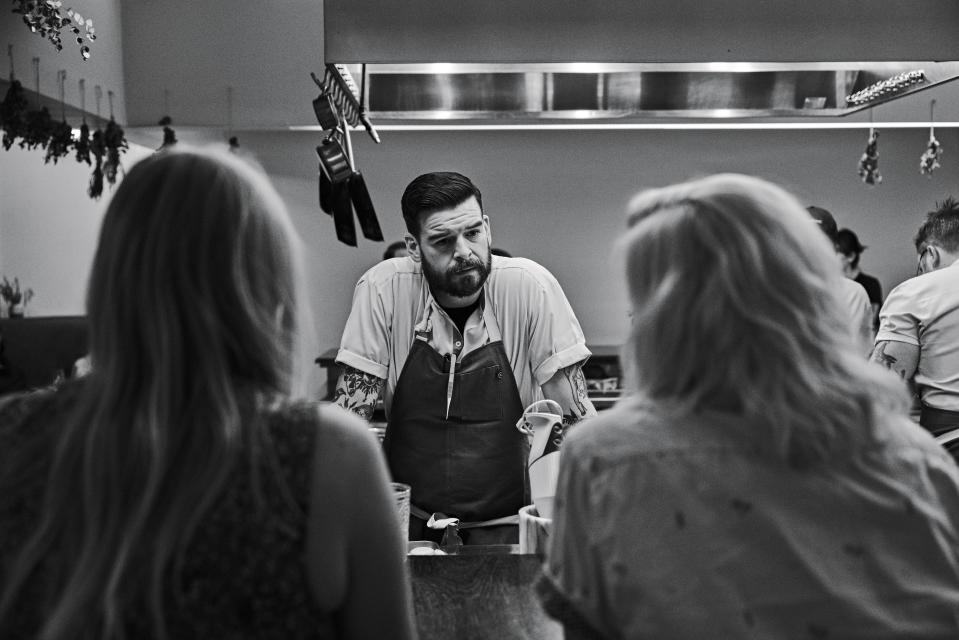
It sounds to me like this is straight out of The Catbird Seat to people's homes. Have you had to make any tweaks or are the recipes pretty much as is?
They're exactly how we did them at the restaurant. Some are heavily technique-driven, some of them are a lot of attention to detail. Some of the recipes I would say maybe aren't realistic for a home cook (who doesn't have) a ton of experience.
Bob Ross said anybody could paint so, like, anybody could cook with the right level of preparation. That was kind of the conversation when we first talked about the book with the publisher. I didn't want to write a cookbook for home cooks. I was writing a cookbook documenting what goes into running The Catbird Seat and that was the idea behind it.
During service, you're serving, talking to people, and it seems tricky to balance.
You're keeping an eye on their waters, you're keeping an eye on (whether) they are dropping the napkin or did they get up to go to the restroom? Is their drink empty? You know, clearing, marking, now you're kind of front of the house, back of the house, all at the same time. So it's definitely tough. The hardest transition for anybody coming into the kitchen is trying to figure out the balance.
Have you had people who were just like incredibly technically excellent culinary professionals who just struggled with the whole hospitality side?
I don't think so. I'll use an example of one of our cooks now, who we hired on after his internship. He was pretty shy and didn't really talk to a lot of people at first and, you know, if you had talked to him two and a half years ago versus now he's a totally different person. He's just gotten so much better at communicating with people.
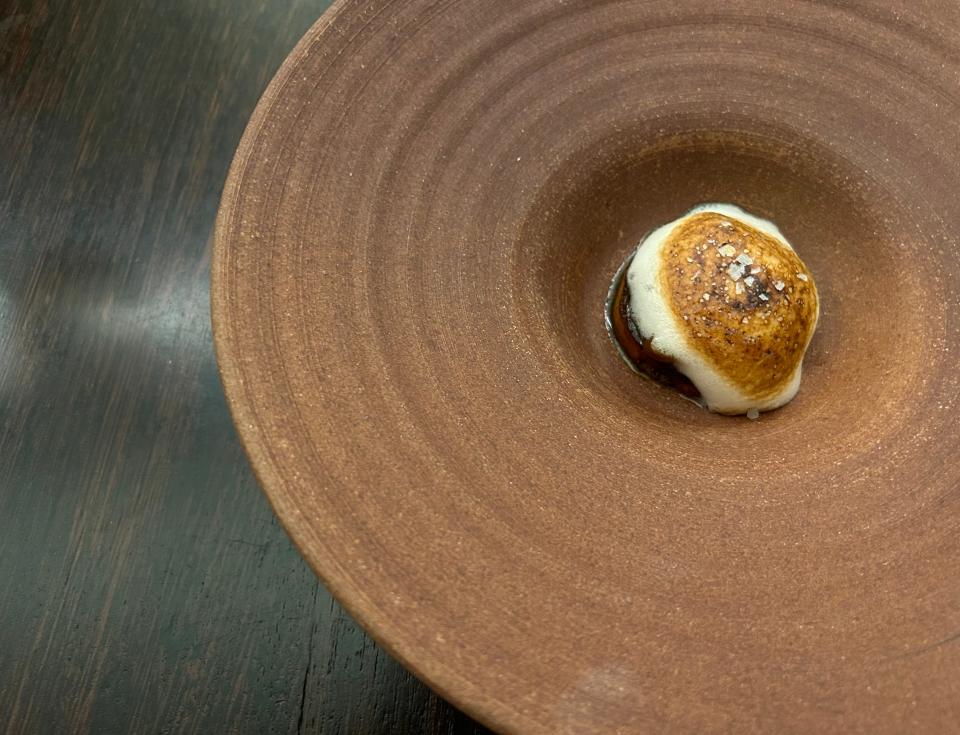
So I think it's part of it, it's just learning techniques, like learning how to communicate with people properly. He may not sit there and have full conversations like a couple of the other guys but he has learned how to hold a conversation with someone. We've been lucky enough not to have anyone who just couldn't talk to anyone at all, thankfully.
You've worked at Husk, Bastion, McCrady's ― a lot of different kitchens. How has The Catbird Seat been different for you, besides the service aspect?
I think the most different thing is having full control of everything and not having to answer to anybody. Not having any kind of limitations, and that can be can be dangerous. Your mind starts to go in all these directions. I had been cooking Southern food for four years and suddenly I could cook whatever I wanted.
That first year was really kind of feeling out the space and then realizing I just want to be cooking seafood. So there was a point where we had no meat on the menu except maybe like a tartare or something. We had seafood all the way up through dessert, and even a dessert with razor clams. So it's just having the ability to use whatever I want but being able to tell myself like, alright, we have to have some parameters here.
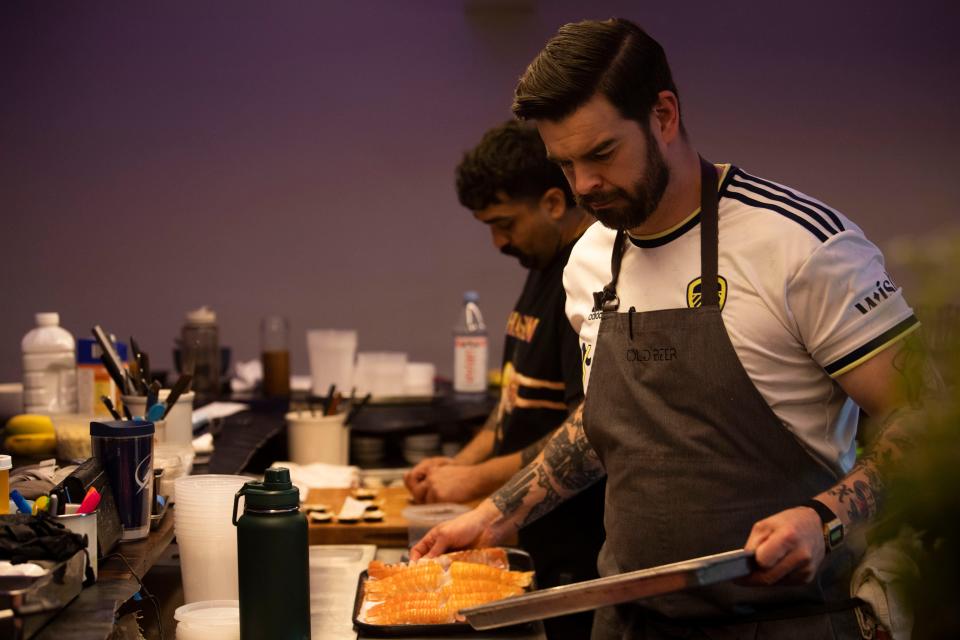
What's your favorite thing you've served?
A banana and caviar dish, which has evolved. There are a lot of things that go into it — this little banana and caviar bite. We moved in with my grandmother when I was 10 and she would always make banana nut bread. She would warm it and then spread like a ton of margarine on it.
So I was serving a piece of warm bread with like a hefty scoop of butter, caviar and then this black walnut toffee, warm, poured over the top so it melts the butter. I think probably in the cookbook that's probably one of my favorite recipes that made it in there.
Also, just because it's something close to me too that kind of reminded me of her and she's not around anymore. She'd always wonder why I worked so hard for so little and, when I graduated culinary school, it cost so much. I feel like if she can see now, maybe it might make sense to her.
What is your biggest takeaway from your experience with The Catbird Seat?
The book kind of touches on this. The confidence that I've gained over the last few years — and not in an arrogant way — just like an artist creating something and believing in what you're creating and standing behind it.
It's so many bites, so I don't expect someone to come in and enjoy all 20 courses. But if I don't hit on one or two for them, or they don't get it, I understand that.
But just being confident and believing in what I serve, knowing that this is my interpretation of what I think this ingredient is supposed to be. I questioned that a lot in the first couple of years, so probably: don't second guess yourself.
That's a great answer. What is something else that you want to share about the book?
It was a lot of hard work, but a lot of my staff helped with it and I don't think I would have been able to get it done without them. So I owe a lot to them as well. Without the staff that I have, I don't think the experience would be what it is. So I've been lucky enough to be blessed with the people who stuck with me for the last few years.
Alabama blue crab and courgette
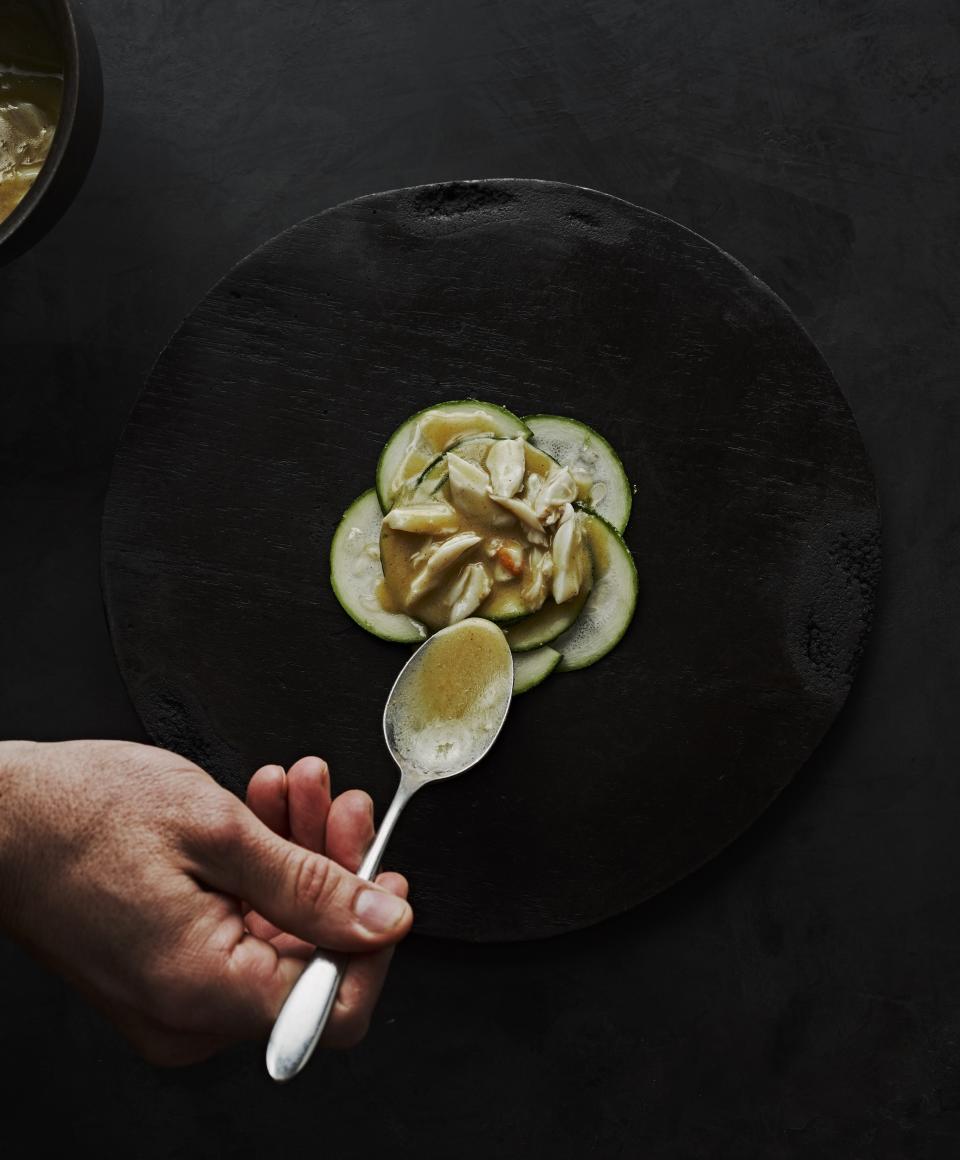
Reprinted with permission from "In the Catbird Seat" by chef Brian Baxter, Turner Publishing.
I love zucchini. This dish was one with which I really wanted to try to showcase the texture and flavor of zucchini when it’s just picked in the field. I like the almost-nuttiness it has and the crisp texture. I can’t stand when zucchini is served overcooked. It becomes soft and leaches a ton of water. I decided to just cut the zucchini to order and dress in some olive oil, sea salt, and lime zest. We hid a sunflower seed and miso puree underneath. I would then pour a warm crab butter sauce over it, which would just warm the zucchini but allow it to maintain its crisp texture. We finished the butter sauce with our version of a Japanese curry spice and served it with a tempura fried zucchini blossom — to soak up any extra sauce — that had been seasoned with Japanese seven spice and crab powder.
Ingredients
For the sunflower-miso puree:
222 grams sunflower seeds
225 grams butter
450 mL filtered water
70 grams white miso
6 grams sugar
48 grams white shoyu
16 grams mirin
16 grams sake
For the curry butter:
30 grams shallot, sliced thin
100 grams lacto-fermented whey
150 grams crab butter base
10 grams bonito
20 grams Japanese curry spice
220 grams butter, cubed and chilled
For the crab butter base:
25 grams carrots, small dice
45 grams fennel, small dice
30 grams onion, small dice
20 grams butter
300 mL sweet vermouth
700 mL crab juice, reserved from cooling and cleaning
Additional ingredients to finish:
zucchini, washed and dried
picked crab meat
olive oil
lime zest
lime juice
Pacific sea salt
Instructions
For the sunflower-miso puree: Slowly toast the sunflower seeds in the butter until golden brown. Strain off the butter and reserve in a warm place.
Add the water and toasted seeds to a pressure cooker on high for 45 minutes. Strain off the water and reserve. Add all the remaining ingredients with the sunflower seeds, and puree until smooth. Add some of the water, if needed, to adjust the consistency of the puree. It should be smooth and the texture of peanut butter. Finish the puree by adding 50 grams of the reserved brown butter.
For the curry butter: Reduce the shallot, whey, crab butter, and bonito over low heat to a volume of 150g. Place in the Vitamix with the curry spice and blend on high. Slowly emulsify in the cold butter. Pass through a fine-mesh strainer and reserve in a warm place until needed.
For the crab butter base: Sweat the aromatics in the butter over medium heat until soft and translucent. Add the vermouth and reduce until all the alcohol has evaporated. Add the crab juice and reduce until only 400g remains. Pass through a fine-mesh strainer and cool.
To finish: Slice the zucchini into ¼" half-moon shapes. Dress them in olive oil, sea salt, and lime zest. Place a small spoonful of the sunflower-miso puree in the center of a plate and shingle the zucchini over the top. Gently warm the crab in the curry butter, season to taste with fresh lime juice, and pour the warm sauce over the top of the zucchini.
This article originally appeared on Nashville Tennessean: Nashville restauraunts: Top Music City chef talks The Catbird Seat

